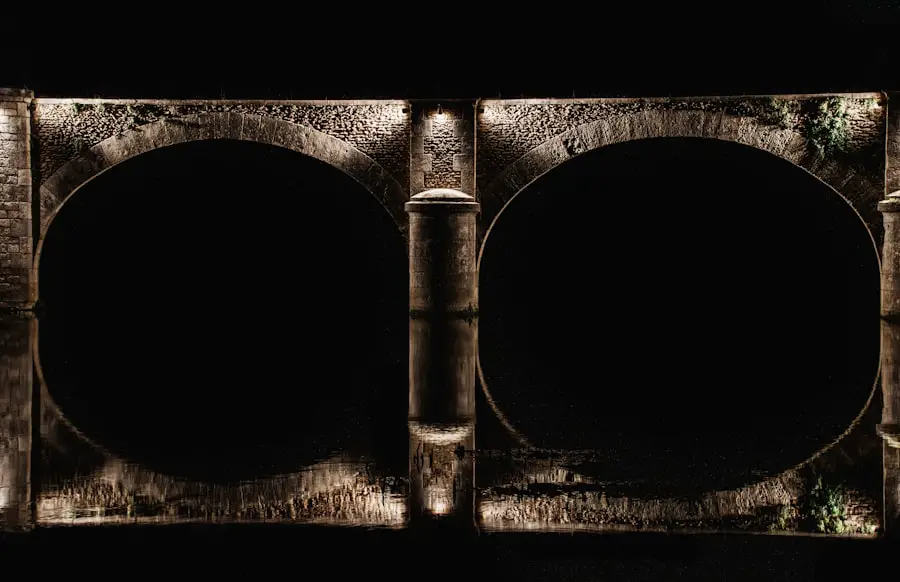The Reflect Tool is a powerful feature available on various photo editing applications, particularly on the iPhone, that allows users to create stunning mirrored images. This tool is particularly useful for photographers and graphic designers who wish to add a unique touch to their images. By creating a reflection effect, users can enhance the visual appeal of their photos, making them more engaging and dynamic.
The Reflect Tool works by duplicating a selected portion of an image and flipping it along a specified axis, resulting in a symmetrical appearance that can evoke a sense of balance and harmony. In essence, the Reflect Tool can transform ordinary images into extraordinary pieces of art. It can be used to create artistic compositions, enhance product photography, or simply add a fun twist to personal photos.
The versatility of this tool allows for a wide range of creative possibilities, from subtle reflections that add depth to bold, dramatic effects that capture attention. Understanding how to effectively utilize the Reflect Tool can significantly elevate one’s photography skills and artistic expression.
Key Takeaways
- The Reflect Tool allows users to create mirror images of pictures on their iPhone for creative effects.
- Access the Reflect Tool by opening the Photos app, selecting the picture, tapping Edit, and then tapping the “…” icon to find the Reflect Tool.
- Choose the picture you want to reflect from your iPhone’s photo library or take a new picture using the camera.
- Adjust the reflection angle by dragging the slider left or right to create the desired mirrored effect.
- Use the Reflect Tool to create unique and eye-catching images for social media posts and other creative projects.
Accessing the Reflect Tool on iPhone
To access the Reflect Tool on an iPhone, users typically need to navigate through the built-in Photos app or a third-party photo editing application that supports this feature. For those using the native Photos app, the process begins by selecting an image from the photo library. Once the desired photo is open, users can tap on the “Edit” button located at the top right corner of the screen.
This action opens up a suite of editing tools, including cropping, filters, and adjustments. If the Reflect Tool is not available in the Photos app, users may need to download a dedicated photo editing app such as Adobe Photoshop Express or Snapseed. These applications often provide more advanced editing features, including the Reflect Tool.
After installing the app, users can import their chosen image and look for the reflection or mirror effect option within the editing tools. The accessibility of the Reflect Tool across various applications makes it easy for users to experiment with their images and explore different creative avenues.
Choosing the Picture to Reflect

Selecting the right picture to reflect is crucial for achieving a visually appealing result. Ideally, images with strong focal points or interesting compositions work best for reflection effects. For instance, landscape photographs featuring serene lakes or rivers can create stunning mirrored effects that enhance the natural beauty of the scene.
Similarly, portraits with clear subjects can benefit from reflections that add depth and intrigue to the image. When choosing a picture, it’s also important to consider the overall mood and theme of the image. A vibrant sunset might lend itself well to a dramatic reflection, while a minimalist black-and-white photograph could create a more subtle effect.
Additionally, users should think about how the reflection will interact with other elements in the image. For example, if there are leading lines or patterns in the original photo, these can be accentuated through reflection, creating a more cohesive and engaging composition.
Adjusting the Reflection Angle
| Reflection Angle | Adjusted Angle | Impact |
|---|---|---|
| 30 degrees | 25 degrees | Reduced glare |
| 45 degrees | 40 degrees | Improved visibility |
| 60 degrees | 55 degrees | Minimized reflection |
Once a picture has been selected for reflection, adjusting the reflection angle becomes an essential step in achieving the desired effect. Most photo editing applications allow users to manipulate the angle at which the reflection is created. This can involve flipping the image vertically or horizontally, depending on how one wants to present the reflection.
For instance, flipping an image vertically can create a sense of depth as if the subject is standing above a body of water. In addition to flipping, some applications offer rotation options that allow users to tilt the reflected image at various angles. This feature can be particularly useful for creating dynamic compositions that draw the viewer’s eye across the image.
By experimenting with different angles and orientations, users can discover unique perspectives that enhance their photographs and make them stand out.
Using the Reflect Tool for Creative Effects
The Reflect Tool is not just about creating simple mirror images; it can also be employed for various creative effects that push the boundaries of traditional photography. For example, users can combine reflections with other editing techniques such as layering or blending modes to create surreal compositions. By layering multiple reflections or combining them with different images, photographers can craft dreamlike scenes that captivate viewers.
Moreover, reflections can be used to emphasize symmetry in an image. Symmetry is often associated with beauty and harmony in art and design; thus, utilizing reflections can enhance these qualities in photographs. For instance, architectural photography can greatly benefit from reflections that highlight geometric shapes and lines, creating visually striking images that draw attention to structural details.
Saving the Reflected Picture

After creating a reflected image, saving it properly is crucial for preserving the quality and integrity of the photograph. Most photo editing applications provide straightforward options for saving edited images. Users typically have the choice to save their work as a new file or overwrite the original image.
It’s advisable to save it as a new file to retain both versions for future use. When saving an image, users should also consider the file format they choose. Common formats include JPEG and PNG; JPEG is widely used for photographs due to its balance between quality and file size, while PNG is preferred for images requiring transparency or higher quality.
Additionally, some applications allow users to adjust resolution settings before saving, which can be important if they plan to print their images or share them on high-resolution platforms.
Sharing the Reflected Picture
Sharing reflected pictures has become increasingly easy with social media platforms and messaging apps integrated into smartphones. Once an image is saved on an iPhone, users can quickly share it through various channels such as Instagram, Facebook, or Twitter directly from their photo library or editing app. Most applications include sharing options that allow users to post their creations without needing to leave the app.
When sharing reflected images online, it’s beneficial to consider how they will be received by an audience. Engaging captions or hashtags can enhance visibility and encourage interaction with followers. For instance, using hashtags related to photography or specific themes (like #ReflectionArt) can help reach a broader audience interested in similar content.
Additionally, sharing reflected images in stories or posts can inspire others to experiment with their photography using similar techniques.
Using the Reflect Tool for Social Media Posts
The Reflect Tool offers unique opportunities for enhancing social media posts by adding visual interest and creativity. In an era where social media feeds are saturated with content, standing out is essential for engagement. Reflected images can capture attention due to their striking aesthetics and artistic flair.
For example, influencers and brands often use reflection effects in product photography to create eye-catching visuals that highlight their offerings. Moreover, using reflections in social media posts can convey specific themes or messages effectively. For instance, a reflective image of nature might evoke feelings of tranquility and peace, making it suitable for wellness-related content.
Similarly, urban reflections could resonate with themes of modernity and innovation in lifestyle posts. By thoughtfully incorporating reflected images into social media strategies, users can enhance their brand identity and connect more deeply with their audience.
Tips for Reflecting Pictures on iPhone
To maximize the effectiveness of the Reflect Tool on an iPhone, several tips can help users achieve better results. First and foremost, experimenting with different images is key; not every photo will lend itself well to reflection effects. Users should try various subjects—landscapes, portraits, or abstract compositions—to discover what works best for them.
Another important tip is to pay attention to lighting and composition when selecting images for reflection. Well-lit photos with clear subjects tend to produce more striking reflections than poorly lit or cluttered images. Additionally, considering symmetry in composition before applying reflections can lead to more harmonious results.
Lastly, don’t hesitate to explore different editing apps; each may offer unique features or capabilities that enhance creative possibilities.
Troubleshooting Common Issues with the Reflect Tool
While using the Reflect Tool on an iPhone is generally straightforward, users may encounter some common issues that require troubleshooting. One frequent problem is difficulty accessing the tool within certain apps; this may occur if an app does not support reflection effects or if it requires an update. Ensuring that all applications are up-to-date can often resolve these issues.
Another common challenge is achieving a seamless reflection effect; sometimes reflections may appear distorted or misaligned due to improper adjustments. In such cases, revisiting angle settings or experimenting with different cropping options may help achieve a more polished look. If reflections appear pixelated after saving or sharing, checking resolution settings before saving can prevent quality loss.
Exploring Advanced Techniques with the Reflect Tool
For those looking to take their use of the Reflect Tool further, exploring advanced techniques can yield impressive results. One such technique involves combining reflections with other effects like blurring or color adjustments to create depth and dimension within an image. For example, applying a slight blur to either the original image or its reflection can simulate a dreamy atmosphere that enhances artistic expression.
Another advanced approach is layering multiple reflected images together in creative ways—this could involve stacking several reflections at varying angles or blending them with different textures or backgrounds. Such techniques allow for intricate designs that push beyond traditional photography into realms of digital art. By experimenting with these advanced methods, users can unlock new creative potentials within their photography practice and produce truly unique works of art using the Reflect Tool on their iPhones.
If you’re looking to learn how to reflect a picture on iPhone, you may also be interested in reading about the latest privacy policy updates on Get iPhone Info. Understanding how your personal information is protected while using your device is crucial in today’s digital age. Check out their privacy policy here for more information. And while you’re at it, explore their website here to stay up to date on all things iPhone-related. Additionally, you can learn more about the team behind Get iPhone Info by visiting their about page here.
FAQs
What is picture reflection on iPhone?
Picture reflection on iPhone is the process of creating a mirrored or flipped version of an image, giving it a reflective effect.
How can I reflect a picture on iPhone?
To reflect a picture on iPhone, you can use the built-in editing tools in the Photos app. Simply open the image, tap “Edit,” then select the “Crop” tool. Tap the “Flip” button to reflect the picture horizontally or vertically.
Can I adjust the reflection intensity on iPhone?
The Photos app on iPhone does not have a specific feature to adjust the reflection intensity. However, you can achieve different reflection effects by experimenting with the flip options and combining them with other editing tools.
Are there third-party apps for reflecting pictures on iPhone?
Yes, there are several third-party apps available on the App Store that offer advanced photo editing features, including picture reflection. Some popular apps for this purpose include Snapseed, Adobe Photoshop Express, and PicsArt.
Can I undo the reflection of a picture on iPhone?
Yes, if you reflect a picture using the Photos app, you can easily undo the reflection by tapping “Edit” and then tapping the “Revert” button to revert to the original image. If you used a third-party app, the process may vary but most apps have an undo or revert option.










